Solving an Earthshine Mystery – Sky & Telescope
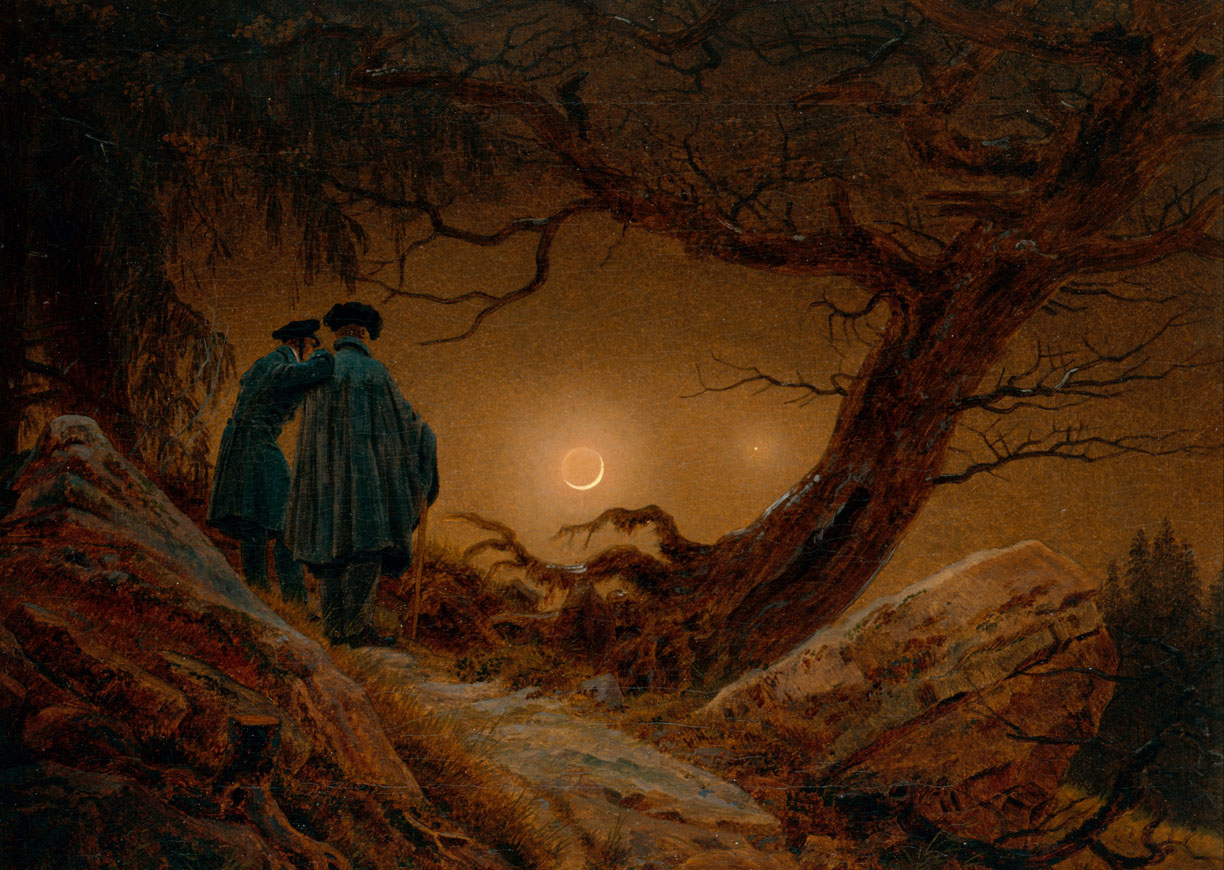
Public domain
Have you ever looked at a crescent Moon and noticed that the rim of the Earth-lit portion looks brighter?
Observers have been aware of the phenomenon for centuries. Before we knew the Moon’s true nature as an opaque, rocky body like the Earth, some astronomers in Galileo’s time even thought the Moon could be translucent. Sunlight streaming from behind the Moon along our line of sight would pass more easily through the limb — where less material would block the light — than the center, making the edge appear brighter.
While we know this isn’t how earthshine works, the perception of a glowing lunar ring has persisted to the present day. I’ve seen it, as have my observing buddies. Edge-brightening even shows up in paintings like the one featured here, begging the question: is it a real phenomenon or due to human perception? As it turns out, it may be a bit of both!
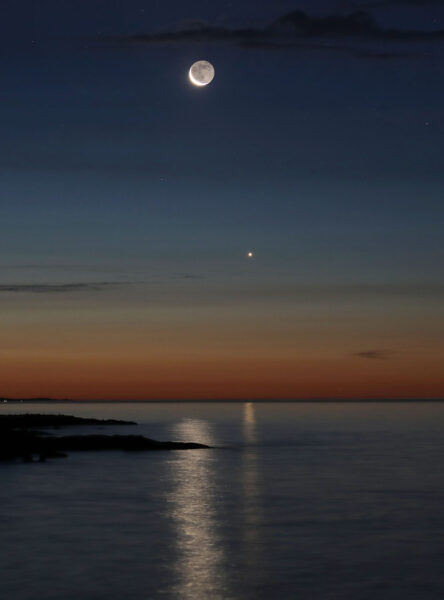
Bob King
Every lunation we’re treated to back-to-back crescents separated by the new Moon. While much is made of the Full Moon and its rising (understandably so), give me a crescent anytime. Few objects in the celestial sphere are more pleasing to behold than the petal-like Moon at dusk or dawn. Pointy as a knife tip yet seductively curved, the crescent’s disparate qualities dovetail to make it an irresistible sight. Earthshine — sunlight reflected from Earth to the Moon and back — makes it even more compelling, especially during the 2-to-3 day period before and after a new Moon.
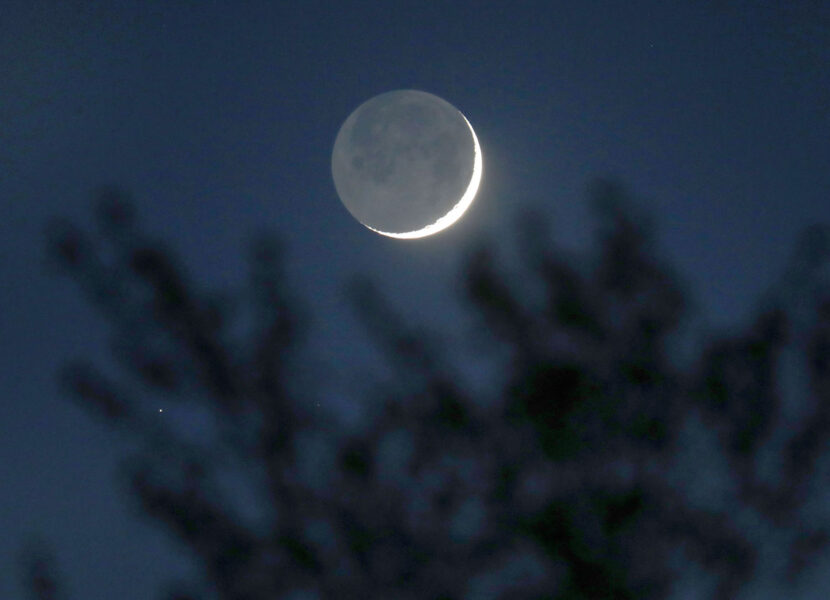
Bob King
Moon and Earth phases are complementary. When we see a crescent, a lunar astronaut gazes at a nearly full Earth. For that reason, earthshine is brightest during the Moon’s crescent phase and decreases as the Moon fills out. The increasing glare of the waxing sunlit portion also hampers earthshine’s visibility toward the middle of the cycle.
I might not have looked any further into the matter were it not for a call to action from Christopher Graney, public relations officer for the Vatican Observatory Foundation, and an adjunct scholar at the Vatican Observatory. He specializes in the history of late 16th- and early 17th-century astronomy and writes for the biweekly Observatory Newsletter. He asked for help, including photographs, that might pin down the origin of the phenomenon.
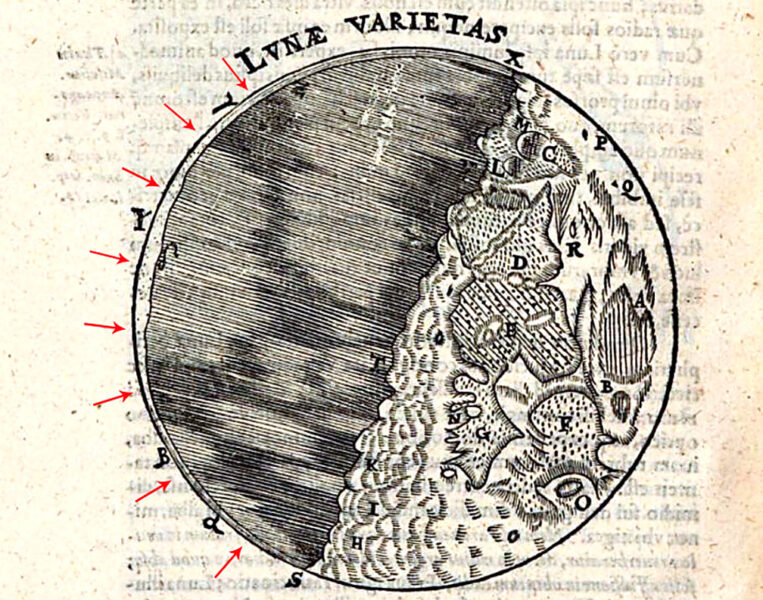
In a recent column, Graney discussed past and present observations of the limb glow, especially those made by early 17th-century astronomers Johann Georg Locher, his mentor Christoph Scheiner, and Galileo. Scheiner and Locher were convinced that sunlight passing through the Moon caused the “secondary light,” the name given earthshine in their time.
Galileo, on the other hand, correctly attributed the cause to earth-light in his 1632 book Dialog Concerning Two Chief World Systems. In fact, he was so incensed by Locher’s hypothesis that he called it “a lie that borders upon rashness.”
Advertisement
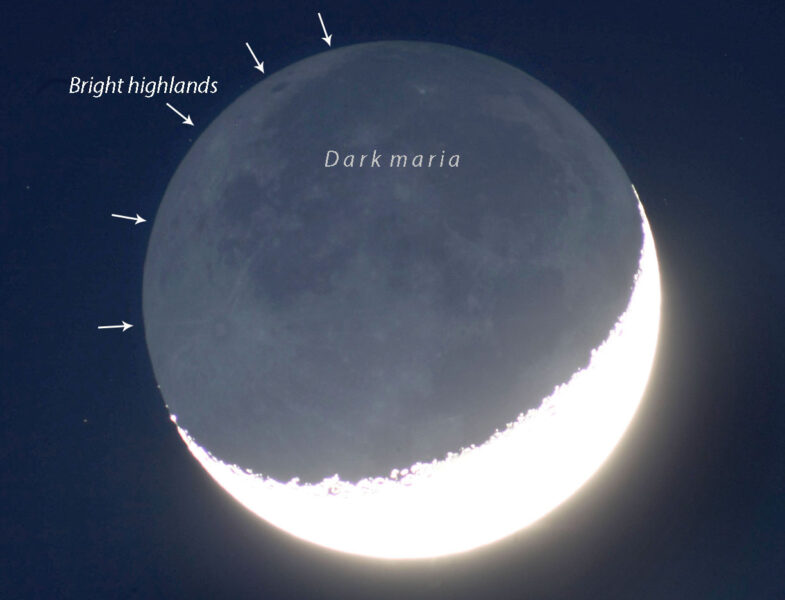
Bob King
Intrigued, I spent time this past June observing and photographing crescent Moons at dusk and dawn. I confirmed the brighter limb effect with my eyes, but since it never appeared in any of my images, I had to conclude that human perception was the cause.
But there’s a caveat: If you look closely at the evening crescent you’ll see that bright highlands rim the limb, while the vast expanse of the dark Ocean of Storms and other maria lie interior to it. Highland materials reflect about twice as much light as the maria, making it possible that lunar geography plays at least a small role in enhancing earthshine along the limb.
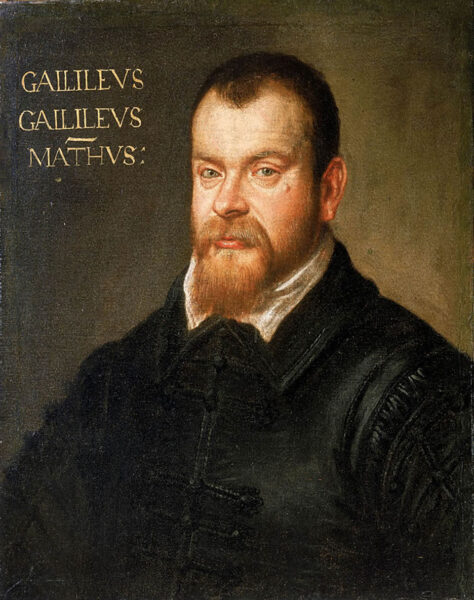
Public domain
I could see the effect of the lighter-toned highlands even better when I blocked out the sunlit crescent and used averted vision. But it seemed too subtle to account for all of the edge effect, so I took a closer look at Galileo’s explanation of the secondary light in his Dialog. He writes:
“It is true that the Moon shows such a circle when observed in twilight at its first appearance after New Moon, but that originates deceptively in differences between the boundaries which terminate the lunar disk over which this secondary light is spread. For on the side toward the Sun, the light is bounded by the bright horn of the moon; on the other side, it has for its boundary the dark field of the twilight, in relation to which it appears lighter than the whiteness of the lunar disk— which on the other side is obscured by the greater brilliance of the horns. If only this modern author (referring to Locher) had tried placing between his eye and the primary brilliance some screen such as the roof of a house, or some other partition, so that only the part of the Moon outside the horn remained visible, he would have seen it all equally luminous.”
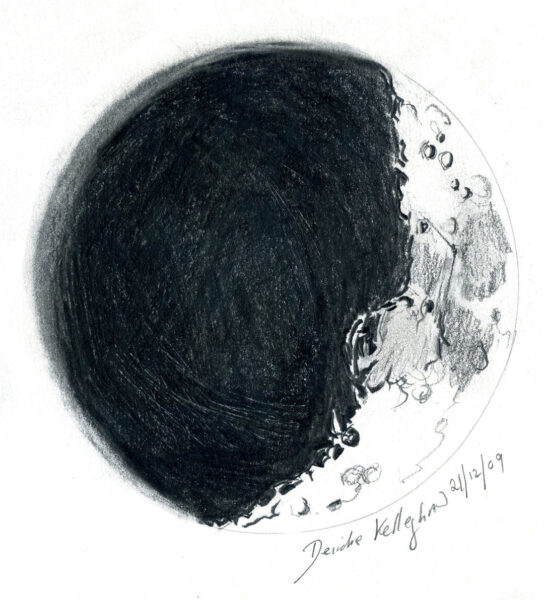
Deirdre Kelleghan
In other words, it’s about how the human eye perceives different tones that are adjacent to one other. Next to the bright glare of the crescent, the earthshine appears darker. When earthshine butts up against the darker sky it appears brighter. This is also also known as the Mach band effect, named for Austrian physicist Ernst Mach who first reported the illusion in 1865.
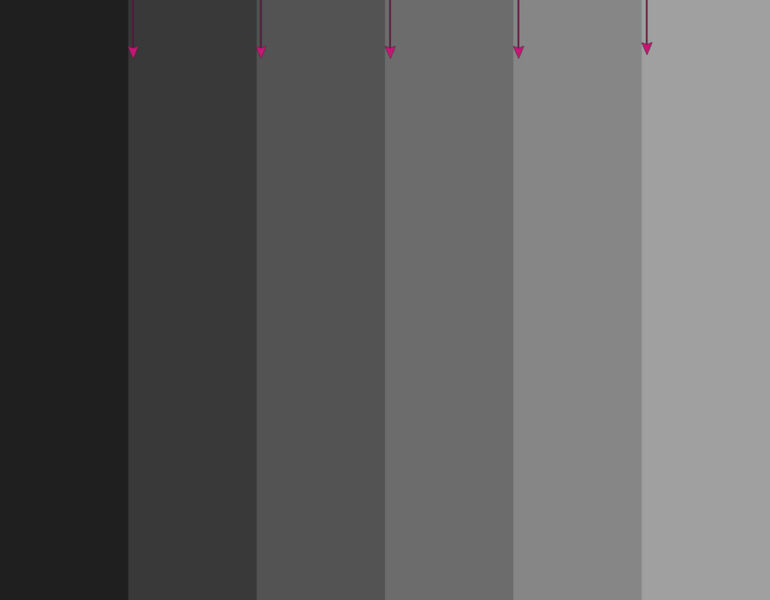
Bob King
Mach discovered that if you take two gray rectangles of slightly different shades and place them side by side, the difference in their tones makes our brains see a lighter band (Mach band) where they touch. I’d offer that this is identical to the situation with earthshine, where gray earthlight shares a border with black (or dark gray) sky, rendering the contact zone a shade brighter.
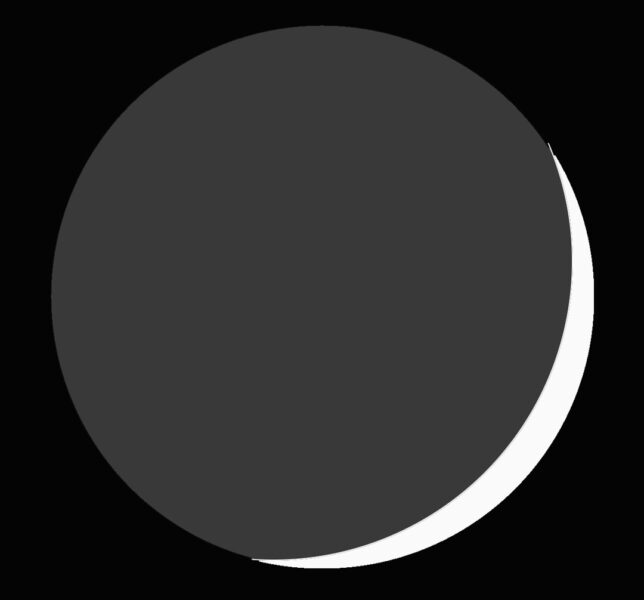
Bob King
Edge detection helps us see where one object ends and another begins. Animals use it to help them distinguish well-camouflaged prey against a busy backdrop. Birds are known to use contrasting edges to target a safe and secure landing. Anything that makes borders easier to see is a useful skill.
While no expert, I think the same ability plays a key role — along with a dash of lunar geography — in our perception of the bright, earthlit ring shown so convincingly in the painting. I want to thank Chris for the inspiration to look more closely and would love to hear about your own observations of the phenomenon. The next opportunity to view the waxing, earthlit crescent occurs between July 30th and August 3rd.

…
Read More: Solving an Earthshine Mystery – Sky & Telescope

